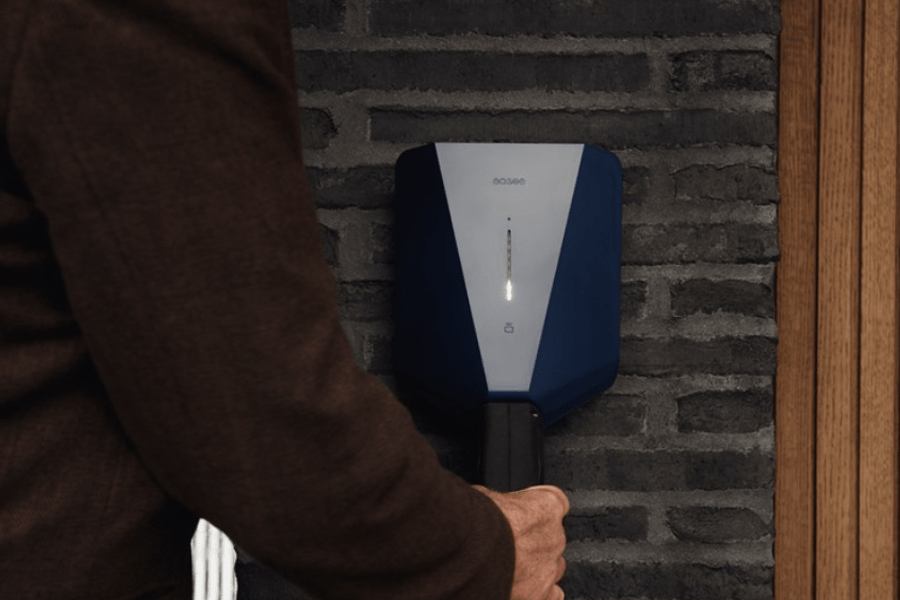EV home charger manufacturer Easee faces potential sales ban
The Swedish Electrical Safety Authority has revealed numerous safety deficiencies in the wall-mounted charging stations of the Norwegian manufacturer Easee. One of the central problems: Contrary to the declaration, no RCD was installed, according to Elsälerhetverket.
The Elsälerhetverket, a Swedish authority for electrical safety, had tested six different wall-mounted charging stations and discovered some deficiencies with the Easee Home. Since the products ‘Charge’ and ‘Ready’ use the same technology, they are also affected. There are several allegations that affect the safety of the product. The ten-page letter from the Elsälerhetverket to Easee requesting a statement on the test results has been seen by electrive.
The central critique is as follows: “The instruction manual states that the product has a built-in RCD. The product is not equipped with a residual current circuit breaker (30mA AC/6mA DC) as stated in the instructions for use,” the Swedish authority wrote. And further: “The instructions do not mention that the product must be preceded by a residual current circuit breaker if it is to be connected to the fixed network.”
The allegedly integrated FI switch is one of the points where the Easee Home is supposed to stand out from other wall boxes in the same price range. Some competitor models also have an FI switch built in, while others do not. This means a residual current circuit breaker must be installed separately by the electrician during installation, which incurs additional costs. If the customer and the electrician rely on the information that an RCD is integrated, the current cannot be disconnected automatically in the event of a fault or short circuit. “There is a risk of injury and fire in the event of earth or DC faults,” the Swedish auditors said. “The test reports submitted to show that the product does not meet the safety requirements.”
Not only the technology is probably faulty
Moreover, according to the letter, the Easee products under investigation have “additional defects beyond those found in the previous tests and investigations by the Electrical Safety Authority. In addition to failing to demonstrate the operation of the residual current device and DC protection, the product fails the LLLN->CP overvoltage test, which is a serious defect.” Since previously identified defects have not been corrected, the authority is of the opinion “that you have not carried out a proper conformity assessment”. In other words, if this were true, there would be no proof that the product meets the specified requirements.
However, this does not only apply to technical aspects such as the missing RCD or the failure of the overvoltage test, but also to the requirements of the declaration. The Elsälerhetverket criticises the lack of a date-of-manufacture label, the fact that some labels are placed behind a cover “so that they are not legible when the product is in use”, and the “incomplete instructions for use”.
For example, the product’s EU declaration is “flawed”: Easee apparently lists several EU directives there, such as RED for electrical safety and electromagnetic compatibility requirements, but also the Low Voltage Directive LVD and EMCD. “Either the product falls under the RED or the LVD/EMCD, never under all directives at the same time,” says the Elsälerhetverket. This also has implications for the instructions for use: “A product that falls under the RED must be accompanied by an EU declaration or a simplified EU declaration in the instructions for use.” Which is probably not the case with Easee.
Deficiencies of 2021 not remedied
“In your EU declaration of conformity, you declare that the product is in conformity with the following standards: EN 61851-1 (2019), EN 61439-7 (2020), EN 61008-1 (2012), IEC 62955 (2018). On the contrary, the documentation submitted shows that the product does not comply with the requirements of these standards. If the EU declaration of conformity states that a product complies with a specific harmonised standard, the product must comply with all the requirements of that standard, not just selected parts,” notes the Elsälerhetverket.
Another problem for the company is that some of the defects were already known. “The labelling deficiencies shown in our test report were also proven in your test reports of June 2021,” the authority writes under the item on declaration deficiencies.
Should Easee not be able to refute the accusations, it faces harsh consequences – up to and including a sales ban. “The Swedish Electrical Safety Authority concludes that the product does not meet the basic safety requirements for placing on the market,” the letter reads. “As the product has serious faults and defects, Elsäkerhetsverket is considering imposing a sales ban and asking you to withdraw it from distributors and end users. Such a decision would mean that the product cannot be sold and that you must notify your retailers to return the products still in stock. You must also try to reach out to customers who bought the product from you or your retailers.”
Easee has until 13 February to respond to the letter. On its homepage, the company has published only a brief statement. “We have received questions from the Swedish Electrical Safety Authority, the authority that monitors all manufacturers of electrical products sold in Sweden. We are in dialogue with them and answering their questions. This has no impact on our operations in Sweden.”
The case is already being closely watched in Norway: “If the Swedish supervisory authorities make a decision that affects Easee, this could have serious consequences for the company, also in Norway,” a representative of the responsible National Communications Authority is quoted as saying in a Norwegian media report. “The common European rules apply. If the product does not comply with these rules and there are serious violations and a sales ban comes into effect, we have to follow up on the Norwegian side.”
It should be noted that not even the final result from Sweden is available yet. The authority wants to wait for Easee’s response before commenting further. “The Swedish Electrical Safety Authority cannot comment on an ongoing case until we have completed our risk assessment,” it says. “When all decisions in the project have been made, a final report will be published. The final report is expected to be ready in a few weeks.”
Source: Info via email, dn.no (in Norwegian), easee.com, elsakerhetsverket.se (both in Swedish)





0 Comments